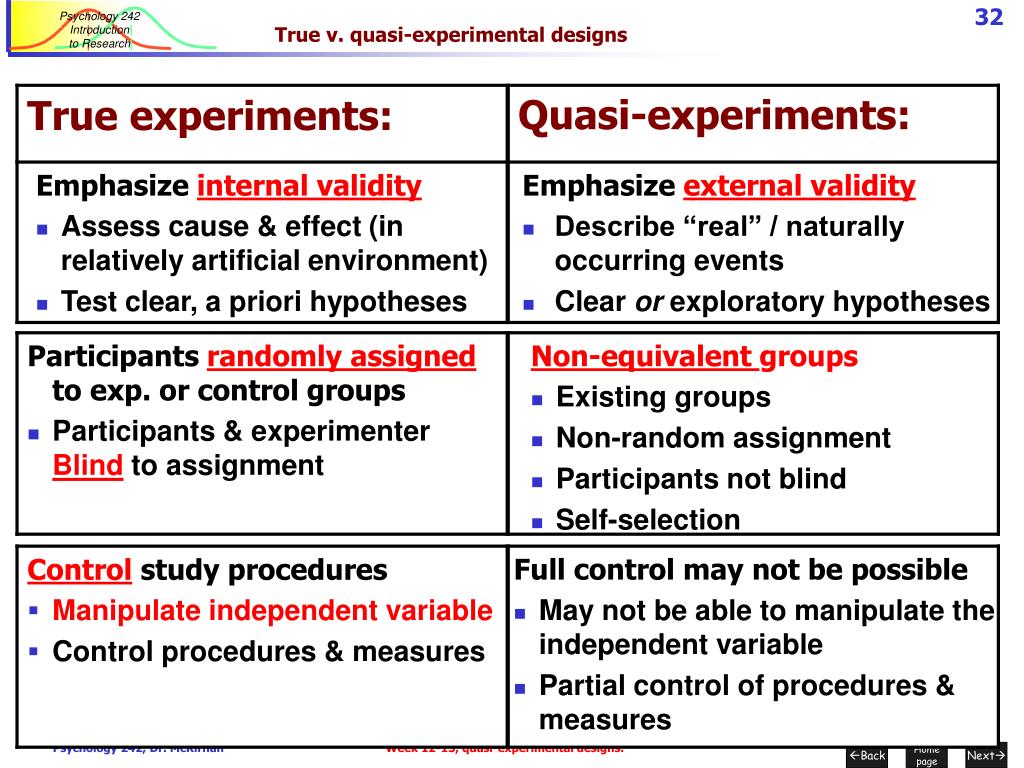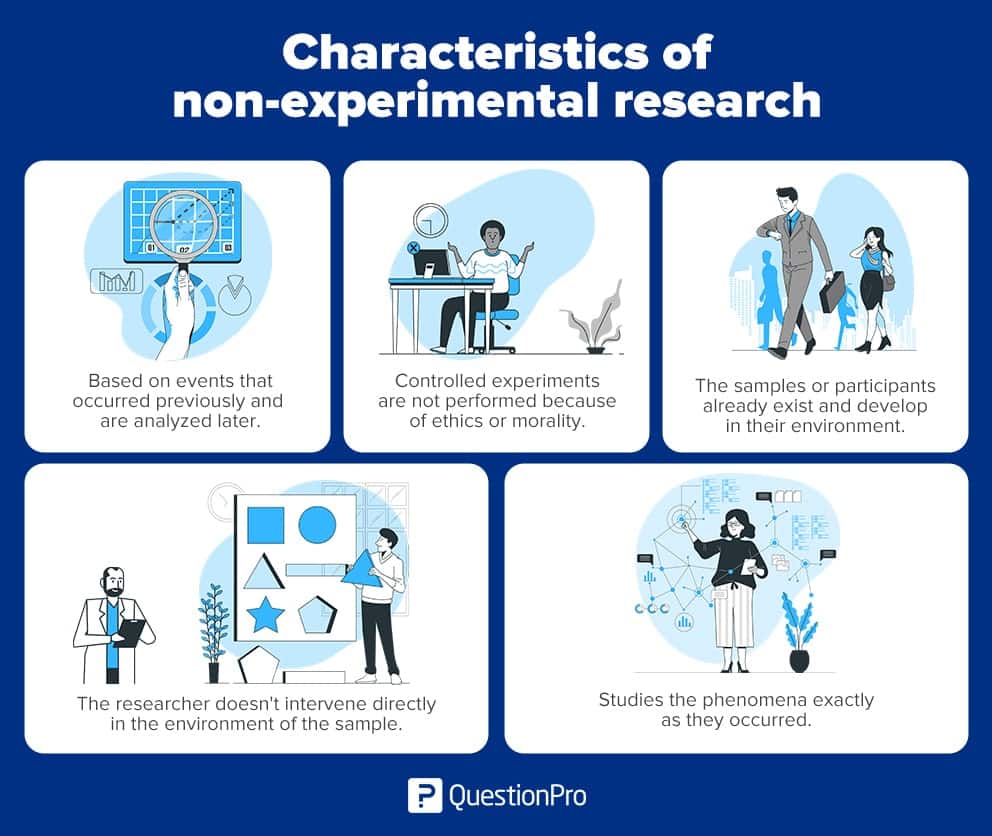Table Of Content

Experimental research designs are often considered to be the standard in research designs. This is partly due to the common misconception that research is equivalent to scientific experiments—a component of experimental research design. This is because it takes place in a real-life setting, where extraneous variables cannot be eliminated. Therefore, it is more difficult to conclude non-experimental studies, even though they are much more flexible and allow for a greater range of study fields. Only one group of carefully selected subjects are considered in this research, making it a pre-experimental research design example.
MULTIVARIATE RESEARCH AND THE NEED FOR STUDY DESIGNS
As a result, the design of the study requires meticulous planning and resources to provide an accurate result. This experimental design method involves manipulating multiple independent variables simultaneously to investigate their combined effects on the dependent variable. A quasi-experimental design is similar to an experimental one, but it is not the same. In this research, an independent variable is manipulated, but the participants of a group are not randomly assigned. Quasi-research is used in field settings where random assignment is either irrelevant or not required.
What are The Types of Experimental Research Design?
This design involves grouping participants within larger units, such as schools or households, and then randomly assigning these units to different treatment groups. Loosely speaking, sample size is the number of experimental units in the study. In a study of the effects of colors and prices on sales of cars, the factors being studied are color (qualitative variable) and price (quantitative variable). Whether you want to know how the public will react to a new product or if a certain food increases the chance of disease, experimental research is the best place to start. Begin your research by finding subjects using QuestionPro Audience and other tools today.
Data Analysis Method

Field experiments are conducted in naturalistic settings and allow for more realistic observations. However, because field experiments are not as controlled as laboratory experiments, they may be subject to more sources of error. This design involves randomly assigning participants to one of two or more treatment groups, with each group receiving one treatment during the first phase of the study and then switching to a different treatment during the second phase.
This is a no equivalent group design example because the samples are not equal. By evaluating the effectiveness of each teacher’s teaching method this way, we may conclude after a post-test has been carried out. Let us consider an academic institution that wants to evaluate the teaching method of 2 teachers to determine which is best. Imagine a case whereby the students assigned to each teacher is carefully selected probably due to personal request by parents or due to stubbornness and smartness. In your research design, it’s important to identify potential confounding variables and plan how you will reduce their impact. If your study system doesn’t match these criteria, there are other types of research you can use to answer your research question.
Case‐control studies based within a defined cohort
Professional values at the beginning of medical school: a quasi-experimental study - BMC Medical Education - BMC Medical Education
Professional values at the beginning of medical school: a quasi-experimental study - BMC Medical Education.
Posted: Fri, 08 Mar 2024 08:00:00 GMT [source]
ANOVA is a statistical technique used to compare means across two or more groups in order to determine whether there are significant differences between the groups. There are several types of ANOVA, including one-way ANOVA, two-way ANOVA, and repeated measures ANOVA. This involves systematically varying the order in which participants receive treatments or interventions in order to control for order effects.
This way, organizations can determine an employee’s skill set at the point of employment. The first two of these groups are tested using the posttest-only method, while the other two are tested using the pretest-posttest method. If after the duration of the research, we find out that sample A grows and sample B dies, even though they are both regularly wetted and given the same treatment. Therefore, we can conclude that sunlight will aid growth in all similar plants. Observational studies can be either descriptive (nonanalytical) or analytical (inferential) – this is discussed later in this article. Although order effects occur for each participant, they balance each other out in the results because they occur equally in both groups.
A company in the product development phase creates multiple prototypes for testing. With a randomized selection, researchers introduce each test group to a different prototype. Develop a prediction about how the independent variable will affect the dependent variable. Although closely related to a true experiment, quasi-experimental research design differs in approach and scope. The research type you use will depend on the criteria of your experiment, your research budget, and environmental limitations. Experimental research enables researchers to conduct studies that provide specific, definitive answers to questions and hypotheses.
You could refer to the list as a checklist of what to avoid while designing your research. This type of experimental research is commonly observed in the physical sciences.
A proper experimental design serves as a road map to the study methods, helping readers to understand more clearly how the data were obtained and, therefore, assisting them in properly analyzing the results. Some of the biases observed with cohort studies include selection bias and information bias. Some individuals who have the exposure may refuse to participate in the study or would be lost to follow‐up, and in those instances, it becomes difficult to interpret the association between an exposure and outcome. Also, if the information is inaccurate when past records are used to evaluate for exposure status, then again, the association between the exposure and outcome becomes difficult to interpret.
Experimental research contains dependent, independent and extraneous variables. The dependent variables are the variables being treated or manipulated and are sometimes called the subject of the research. Research study design is a framework, or the set of methods and procedures used to collect and analyze data on variables specified in a particular research problem. In a within-subjects design, each participant experiences all conditions, and researchers test the same participants repeatedly for differences between conditions. In a between-subjects design, every participant experiences only one condition, and researchers assess group differences between participants in various conditions.

You can measure some data with scientific tools, while you’ll need to operationalize other forms to turn them into measurable observations. However, these conditions are unethical or impossible to achieve in some situations. This procedure uses mathematical, physical, or computer models to replicate a real-life process or situation. It is frequently used when the actual situation is too expensive, dangerous, or impractical to replicate in real life. Before employing a job seeker, organizations conduct tests that are used to screen out less qualified candidates from the pool of qualified applicants.
Condition one attempted to recall a list of words that were organized into meaningful categories; condition two attempted to recall the same words, randomly grouped on the page. To compare the effectiveness of two different types of therapy for depression, depressed patients were assigned to receive either cognitive therapy or behavior therapy for a 12-week period. Experimental research helps a researcher gather the necessary data for making better research decisions and determining the facts of a research study. Video recording involves recording participants’ behavior or interactions using cameras or other recording equipment. This method can be used to capture detailed information about participants’ behavior or to analyze social interactions. Archival data involves using existing records or data, such as medical records, administrative records, or historical documents, as a source of information.
Experimental study of the role of surface tension in enhancing the performance of solar stills using different designs of ... - ScienceDirect.com
Experimental study of the role of surface tension in enhancing the performance of solar stills using different designs of ....
Posted: Fri, 15 Sep 2023 07:00:00 GMT [source]
This page titled Components of an experimental study design is shared under a not declared license and was authored, remixed, and/or curated by Debashis Paul. In a blocked experiment, heterogenous experimental units (with known sources of heterogenity) are divided into homogenous subgroups, called blocks, and separate randomized experiments are conducted within each block. In addition to randomizing the treatments, it is important to randomize the time slots also.
As a result, many ANOVA books were titled Experimental Design (see, for example, Edwards12), and ANOVA courses taught in psychology and education departments included the words experimental design in their course titles. In block randomization, the subjects of similar characteristics are classified into blocks. The aim of block randomization is to balance the number of subjects allocated to each experiment/intervention group. For example, let's assume that there are four subjects in each block, and two of the four subjects in each block will be randomly allotted to each group. However, it helps to control the balance between the experiment/intervention groups. Hence, the subjects are monitored over a period of time for occurrence of a particular disease process.
No comments:
Post a Comment